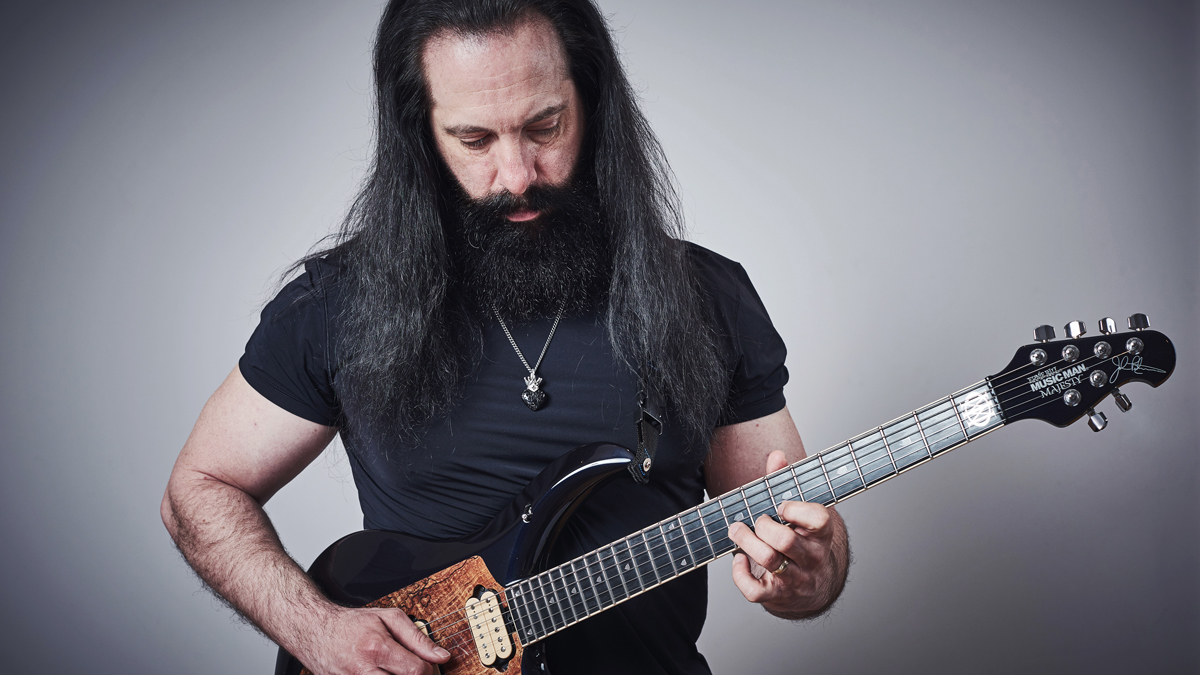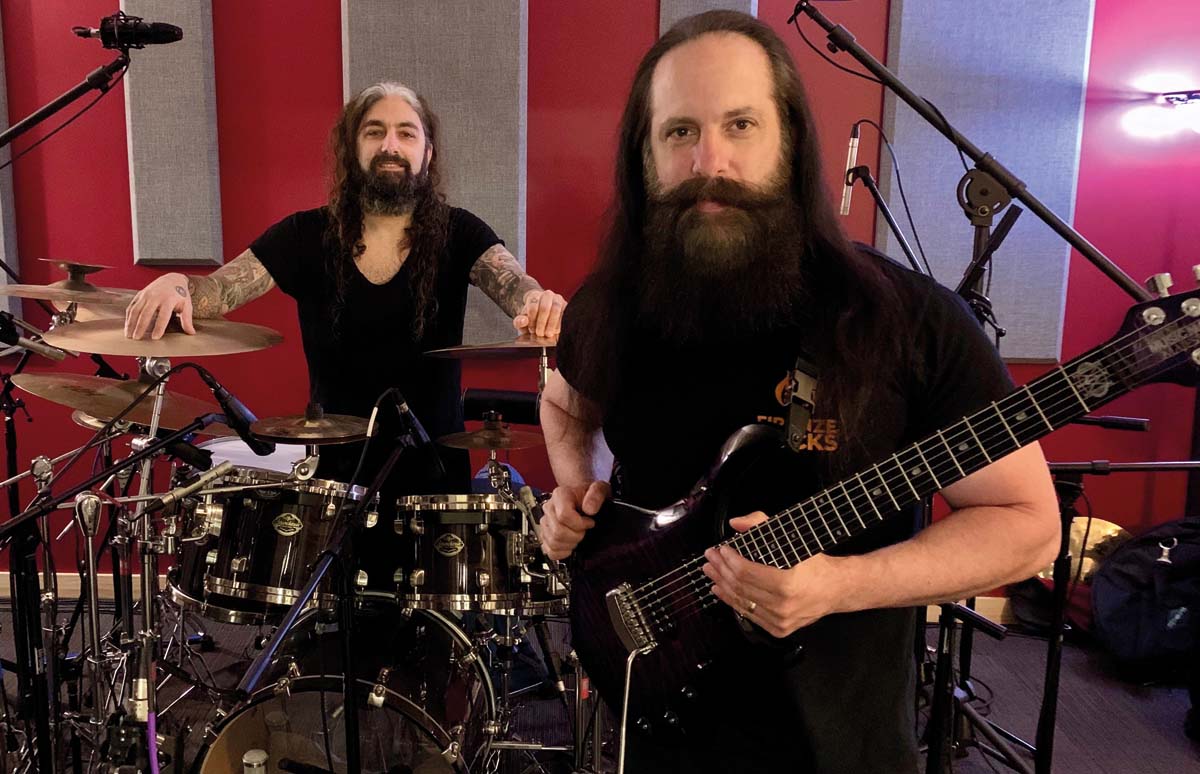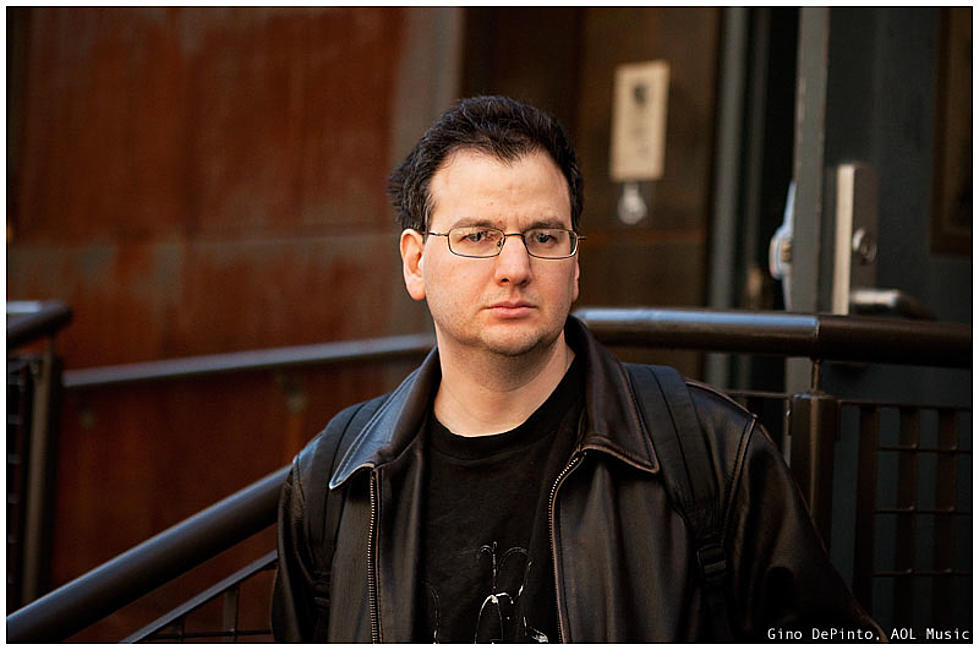John Petrucci details Terminal Velocity track by track: "These songs had to have a message. And the best way to do that is through melody"
The Dream Theater guitarist takes a closer look at his 2020 solo album, a veritable supernova of next-level guitar playing

From the galactic-sounding guitar effects and insistent, propulsive riffing and ear-nagging hooks of the title track to the majestic journey of the album-closer Temple of Cicadia – which weaves spindly six-string passages between arhythmically chugging riffs and incorporates a clean midsection colored with harmony-laden licks – Terminal Velocity is a masterful presentation.
It’s a diverse, invigorating illustration of how guitar pyrotechnics can be arranged to create what Frank Zappa called “impossible guitar parts” that neither come across as self-indulgent excursions or detract from the enjoyability of the songs – and ultimately landed Petrucci the no. 3 spot on our list of 2020’s best guitar albums.
With most guitar instrumental music, you can only listen to soloing for so long before you need something else
The rest of the album demonstrates Petrucci’s acumen and agility, whether playing music rooted in blues, Latin music, '80s metal or thrash. And through it all, Petrucci offers the listener melodic threads to cling to throughout the wild ride.
“With most guitar instrumental music, you can only listen to soloing for so long before you need something else,” Petrucci says. “I felt that these songs had to go somewhere. They have to speak and have a purpose. They have to have a message. And the best way to do that is through melody.”

The guitarist also sought to maintain interest by presenting a wide variety of sonic techniques and compositions filled with unexpected twists and turns.
“On most of the songs on this record there will be a part that will sound like a certain type of song, but it’ll go into a section that you’re sort of not expecting stylistically. That always keeps listeners guessing and keeps things interesting.”
Rather than delve into the minutiae of every track, we let Petrucci describe what he was striving for with each individual part of Terminal Velocity – and what happened along the way…
All the latest guitar news, interviews, lessons, reviews, deals and more, direct to your inbox!
1. Terminal Velocity
“Out of the five new songs, that was the first one I wrote. It was one of those seeds that I had in my files that jumped out at me as soon I went back and heard it. I started playing the main lick and it developed right away into something cool. It’s done backwards with filtering so it gives you this really textured sound.
“A lot of the guitar on the record is manipulated to create these memorable soundscapes. That riff just sounded like an album opener to me, and it remained the album opener because there was something about it that caught my attention right away.“
2. The Oddfather
“It starts with these intervallic chords that come from early Queensryche or even Judas Priest. They’re really just two-note chords, and I love them because you can very easily make them diminished chords or inverted chords or minor chords. In this case, when you do that kind of thing over a pedal tone it creates a lot of drama. I do that with Dream Theater a lot as well.
“As the title The Oddfather suggests, I wanted to keep an Italian or Sicilian theme going on that the song hints at, so there's a lot of super-fast tremolo picking as if the electric guitar were a mandolin – but done with high facility and with lines that run throughout the song.”
3. Happy Song
“That’s one I wrote a few years ago and played on G3, and it came from this idea I had at home. The opening pattern prompted the whole song and it almost sounds like a theme for a TV show – or a little bit like a '90s pop-punk band. But the thing about it is that I wanted it to sound positive. The original title was Cloud 10, and I just thought Happy Song was more direct. It’s one I hope people will smile at.“
4. Gemini
”I wrote that song for clinics around 1993. It’s the oldest song on there, and it was interesting because I had no version to base it off of. I used to bring along a little Yahama sequencer and play these clinics so I never had an official demo. I scoured the Internet to find the best-sounding quality of a video recording where a guy’s holding a camera in a clinic where people are talking.
”It was interesting to try to remember what I intended to play and build it into a complete song. There’s a moment in Gemini, too where I was playing some acoustic rhythm for the solo section breakdown, and I just started soloing on the acoustic while I was playing the rhythm. I thought, 'You know what? This sounds pretty cool!'
I decided to make half the solo acoustic – and then follow it with electric and have it build, almost like an Al Di Meola type of piece
”It was a long solo, so I started improvising and soloing on acoustic and I decided to make half the solo acoustic – and then follow it with electric and have it build, almost like an Al Di Meola type of piece with a Latin-y groove to it.
”And that was very different than the original clinic version, so that was fun. I recorded the acoustic solo on a gypsy jazz guitar that I bought in Germany from Joscho Stephan, who is this German gypsy jazz player and builder.”
5. Out of the Blue
”On a record like this, that’s spirited and energetic and technical and is filled with metal parts, it’s always cool to try a melodic idea that stands out and provides a break from the other stuff.
”This is essentially a blues piece, but there’s a stylistic part in there that breaks it up. It’s a bridge that I played twice and it takes the song out of the blues world and into a more melodic part that’s like my take on Steve Morse’s playing in Dixie Dregs. It’s very thematic and dramatic and then it shifts right back into the blues. So you’re going from a relaxed swing feel to a straighter part, and that demonstrates how you can get so many tones out of the JP Mesa/Boogie amp, not just prog metal.
”The opening guitar is channel one with a Tube Screamer to break things up, and then I switched to channel two on the amp for the whole blues sound without a lot of gain. You can really hear the sweetness of the notes. That was fun for me because you don’t hear that side of me a lot in Dream Theater, but I like playing in that style because it’s expressive and relaxed in a different way.”
6. Glassy-Eyed Zombies
”That’s one of the heavier songs on the album. I tuned the guitars down to D, and it has more shredding in it than a lot of the other songs, so it really shows the metal side of my style. I like that the main melody is sort of quirky in that song and we wanted it to stand out so we took up a bunch of time to get the right sound for that.
”When I played it, Jimmy T and I would settle on certain delay effects on the guitar and share that information with Andy Sneap [who mixed and mastered], so it was a collaborative process all around.
”By the time Andy was done with it and I heard it back it was literally, exactly the way I was hearing it in my head and the way I wanted it to sound on the album. And we did that all remotely, so I’ve gotta give Andy a lot of credit for getting everything exactly right. That guy is amazing.”
7. The Way Things Fall
“I wrote it during the same period I did Happy Song and Glassy-Eyed Zombies, but I didn’t do anything with it. I remember rehearsing it for the G3 tour, but it wasn’t working out so I put it aside. I forgot about it for years but it was fully demoed. We loaded the multis of that in and I recorded everything.
“My favorite part of the song is the acoustic strumming during the verses. I originally had distorted electric guitars left and right, but when I recorded I said, 'Why don’t we try muting the electric rhythm guitars and play the electric melody against a strumming acoustic?'
“There was nothing else on the album like that, so it was just something different where the heavy guitars drop out and the acoustic rhythms and acoustic lead comes in. It’s like a really long and cool jamming session. I always like to get these cool Robin Trower-ish sections in because they’re so much fun. You can rip over them or do something bluesy and more raw or you can make it melodic. You have a lot of flexibility.“
8. Snake in My Boot
”I had an idea to do something like this for a long time and I’m so glad I did it. The original idea was to have a single guitar and a kick drum going the whole time so it would almost be like an audience-participation part of the show.
“I pictured it playing live and like having the audience stomp along or clap, and just having that single guitar drive the whole song. On the album, I developed it a little further from there, but for the most part, there’s just the one guitar.“
9. Temple of Circadia
“I wrote the song on a six-string but then I played it on a seven because I thought it would sound heavier, especially when I developed the middle breakdown section, which goes into clean and acoustic guitars and sounds almost like a Metallica-ish, melodic solo section. That just made the song more powerful for me and it screamed 'album closer' in the same way that Terminal Velocity shouted out 'album opener.'
I love anything that gives me the ability to paint outside the lines
“Listeners might think there are strings or keyboards during the verses because that’s what it sounds like, but it’s actually a clean guitar part with a crystals [harmony] effect. It’s the same idea as the way I started the record with effects. It came out cool but it’s not like I wanted to avoid having any keyboards on the record.“
“Keyboards are awesome and I would be thrilled if I could play them. But in the couple of instances I was hearing organ or strings in a song it was a fun challenge to figure out how to get those sounds with just guitar.
“As far as playing it on a seven-string, I’m kind of surprised that it’s the only seven-string song because I love the extended range of a seven-string guitar. Even when you’re playing things that are in a key that fits naturally on a six-string, just the idea that you can go below where you normally would to create riffs and licks and lines is something I really like.
“I love anything that gives me the ability to paint outside the lines. With an instrumental album, the guitar melody has to guide the melody almost the way a vocalist would do it. So I always try to shape the way it goes so it doesn’t sound like a monotone, boring melody. I’m really conscious of making sure it’s not boring.“
- Terminal Velocity is out now via Sound Mind Music.
Jon is an author, journalist, and podcaster who recently wrote and hosted the first 12-episode season of the acclaimed Backstaged: The Devil in Metal, an exclusive from Diversion Podcasts/iHeart. He is also the primary author of the popular Louder Than Hell: The Definitive Oral History of Metal and the sole author of Raising Hell: Backstage Tales From the Lives of Metal Legends. In addition, he co-wrote I'm the Man: The Story of That Guy From Anthrax (with Scott Ian), Ministry: The Lost Gospels According to Al Jourgensen (with Al Jourgensen), and My Riot: Agnostic Front, Grit, Guts & Glory (with Roger Miret). Wiederhorn has worked on staff as an associate editor for Rolling Stone, Executive Editor of Guitar Magazine, and senior writer for MTV News. His work has also appeared in Spin, Entertainment Weekly, Yahoo.com, Revolver, Inked, Loudwire.com and other publications and websites.

